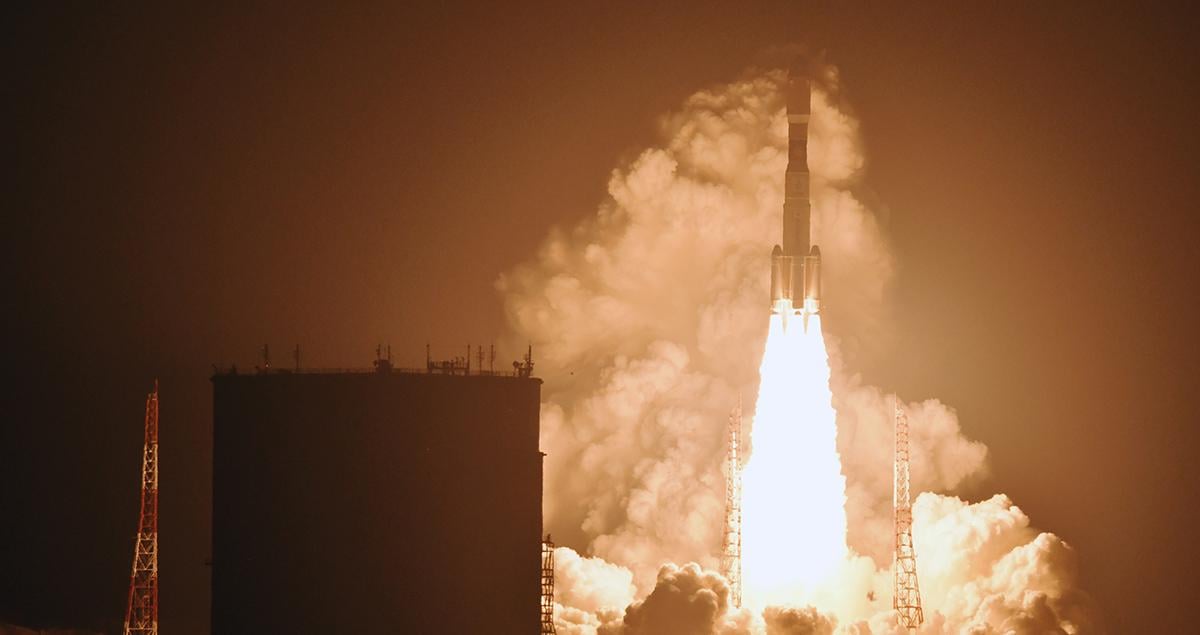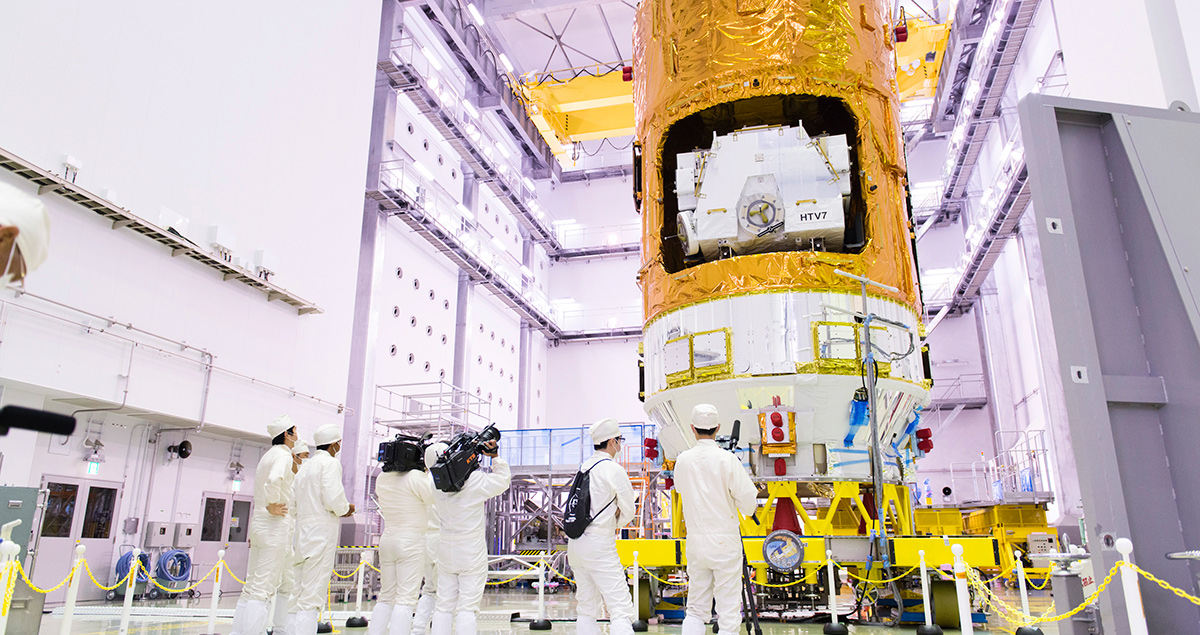Launching the space business using Japan’s flagship launch vehicles

Lower prices and mature technologies
The space business has been revitalized in recent years with several new ventures being developed in places not associated with the traditional industry leaders in Europe, Japan, Russia and the US. This new diversity has expanded the commercial potential of the sector, opening up a wealth of fresh business possibilities, which have received support from both government and private sources.
New opportunities have been created in the development and launch of small rockets. There is also strong growth in satellite-dependent observation, broadcasting, communication and data services.
Research, experiments and manufacturing aimed at space development are also gathering pace.
Space tourism is another focus of attention and several companies are currently creating out-of-this-world experiences aimed at exploring the leisure potential of space.
The structure of the space business has been transformed in a way that has taken it away from its roots. Early space programs were based on large-scale, high-cost and high-functionality projects. I believe the present space business is steadily moving towards lower prices and incorporating mature technologies that combine space development with input from other sectors.
As someone closely immersed in the space business I find this progress extremely encouraging and I am sure the initiatives that Mitsubishi Heavy Industries (MHI) has been undertaking will compliment this trend. We’re committed to providing low-cost access to the many business opportunities that space offers mankind.
However, looking into the future I recognize there is still a long way to go before the conditions are in place for the space business to expand rapidly. Space-related endeavors have a high risk of something going wrong, often with very serious consequences. Those involved in the industry need to be resilient, stay focused on achieving their goals and be prepared to cope with the inevitable twists and turns that arise.
Japanese expertise
The MHI team is responsible for manufacturing the H-IIA and H-IIB flagship launch vehicles, and their associated launch and transport services. I am immensely proud of the success of our space program, which boasts an abnormally high launch success rate, high on-time launch rate and excellent service provision.
To date, the two launch vehicles have achieved outstanding operational success rates of 97.4% for the H-IIA, and 100% for H-IIB. This ranks among the highest performance level in the world.
We are world leaders when it comes to launching on schedule. Most lift-offs have proceeded on the planned date and time, excluding external factors such as bad weather.
MHI takes pride in the level of service and attention to detail that goes into each launch, to ensure our customers are satisfied and confident that all their requirements have been met.
I believe our outstanding results are influenced by three Japanese traditions. First, MHI places value on complementary and continuous improvements that have been the hallmark of Japanese manufacturing for many years. The second tradition embodies the concept of wa, meaning harmony, which is highly regarded by the Japanese. A lot of synergy exists between the MHI team, the Japan Aerospace Exploration Agency (JAXA), which is a National Research and Development Agency, and other partner companies. Finally, we invoke the spirit of omotenashi, or hospitality, by working to fully satisfy the expectations and wishes of our guests and friends.
With space vehicle launches there are no second chances. Automobile designs can be fine-tuned using test vehicles and airplanes undergo flight tests, but there is no launch test for rockets.
The buildup to each launch involves preparing for every eventuality, with those involved in the preparations constantly discussing, consulting and verifying every detail to ensure the reliability of around one million separate components. I believe this kind of accumulated effort is one of the reasons MHI is consistently so successful.
Offering a smooth ride
The H-IIA was Japan’s fifth flagship launch vehicle and it achieved two of the main development goals established when the original N-I launch vehicle was being developed back in the 1970s. As well as being a 100% Japanese-made rocket, the H-IIA also became the first launch vehicle entirely handled by the private sector from manufacture to launch.
Over the H-IIA’s 20-year lifespan the development team has been committed to achieving a delicate balancing act between reducing costs while maintaining high performance and reliability. This quest continues with the next generation of rockets, with development aimed at further reducing production and operational costs, while achieving greater ease of use and remaining competitive in the international market.
In partnership with MHI, JAXA is leading the project to build the H3 rocket that is currently in the final stages of development. Its first launch is scheduled for 2020. The project has several ambitious aims, which include cutting 50% of the costs associated with the H-IIA; halving the existing lead time from order receipt to launch (to about one year); and achieving a smooth ride, with just one quarter of the H-IIA’s impact acceleration following launch.
When a launch vehicle pulls away from Earth’s gravity into space, its payload (such as a satellite) is subjected to extreme conditions. Reducing impact acceleration allows the payload to be made lighter, thinner, shorter and more compact, resulting in reduced costs and increased freedom. The design should give the H3 a decisive competitive advantage in the launch and transport services market.
As an internationally competitive Japanese launch vehicle, the H3 is expected to make a significant impact on the space business over the next 20 years. Plans include scheduling a greater number of space development missions, promoted by the Japanese government; providing contracted launch services to Japanese and overseas organizations; and transporting cargo to the International Space Station (ISS).
To meet these demands, MHI is planning to increase production capacity by doubling the floor space of the Tobishima Plant of Nagoya Aerospace Systems Works, which manufactures and conducts assembly of the launch vehicles.
I believe MHI’s involvement in the H-IIA, H-IIB and H3 projects, working alongside trusted partners including government agencies, has contributed to the growth of the Japanese aerospace industry, which is in a very favorable position to further advance space-related production and technical infrastructure.

Pride and responsibility
In September, the H-IIB Launch Vehicle will commence the seventh flight of the H-II Transfer Vehicle, Kounotori 7 (also known as HTV 7), from Tanegashima Space Center. The spacecraft is scheduled to deliver cargo to the ISS.
In a fitting testament to Japan’s launch technology, JAXA announced that this launch will represent the first time a payload has included a small capsule capable of returning to Earth with scientific experiment samples and other materials from the ISS. This will be the first time Japan will do this on its own.
Furthermore, the European Space Agency has announced an intention to subcontract the HTV 7 to transport the Advanced Closed Loop System (ACLS) to the ISS. Since the 1960s when manned space flight began, hydrogen and water produced through human respiration has been discarded into space without recycling. However, the ACLS is a new life-support system for the ISS that recycles hydrogen so it can be reused, which could bring about a new era of long-distance, manned space flight.
Mitsubishi Heavy Industries (MHI) is proud to be part of international efforts to expand the frontiers of space by developing industry-leading launch vehicles. With a strong sense of professionalism and responsibility, we are working hard to ensure all necessary precautions are in place for the upcoming HTV 7 launch.





